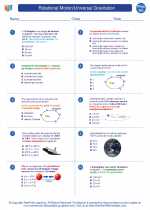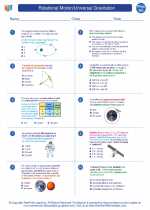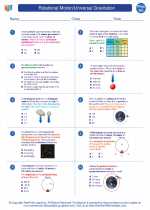Variation in Physics
Variation is a concept in physics that refers to the relationship between different quantities and how they change relative to each other. There are different types of variation that are commonly studied in physics, including direct variation, inverse variation, and joint variation. Understanding these concepts is important for solving problems involving proportional relationships in physics.
Direct Variation
Direct variation refers to a relationship between two quantities in which they change in the same direction. This means that as one quantity increases, the other also increases, and vice versa. Mathematically, this can be represented by the equation y = kx, where y and x are the two quantities, and k is the constant of variation.
Inverse Variation
Inverse variation, on the other hand, describes a relationship in which one quantity increases as the other decreases, and vice versa. This can be represented by the equation y = k/x, where y and x are the two quantities, and k is the constant of variation.
Joint Variation
Joint variation involves the relationship between three or more quantities, where one quantity varies directly with one or more other quantities and inversely with one or more other quantities. This can be represented by the equation y = kxz/y, where y, x, and z are the quantities involved, and k is the constant of variation.
Study Guide
Here are some key points to keep in mind when studying variation in physics:
- Understand the concept of direct variation and how to identify and solve problems involving direct variation.
- Learn the concept of inverse variation and how to recognize and solve problems involving inverse variation.
- Practice identifying joint variation relationships and solving problems related to joint variation.
- Be familiar with the concept of the constant of variation and how it relates to direct, inverse, and joint variation equations.
- Work on a variety of practice problems to solidify your understanding of variation and its applications in physics.
[Variation] Related Worksheets and Study Guides:
.◂Physics Worksheets and Study Guides High School. Rotational Motion/Universal Gravitation

 Worksheet/Answer key
Worksheet/Answer key
 Worksheet/Answer key
Worksheet/Answer key
